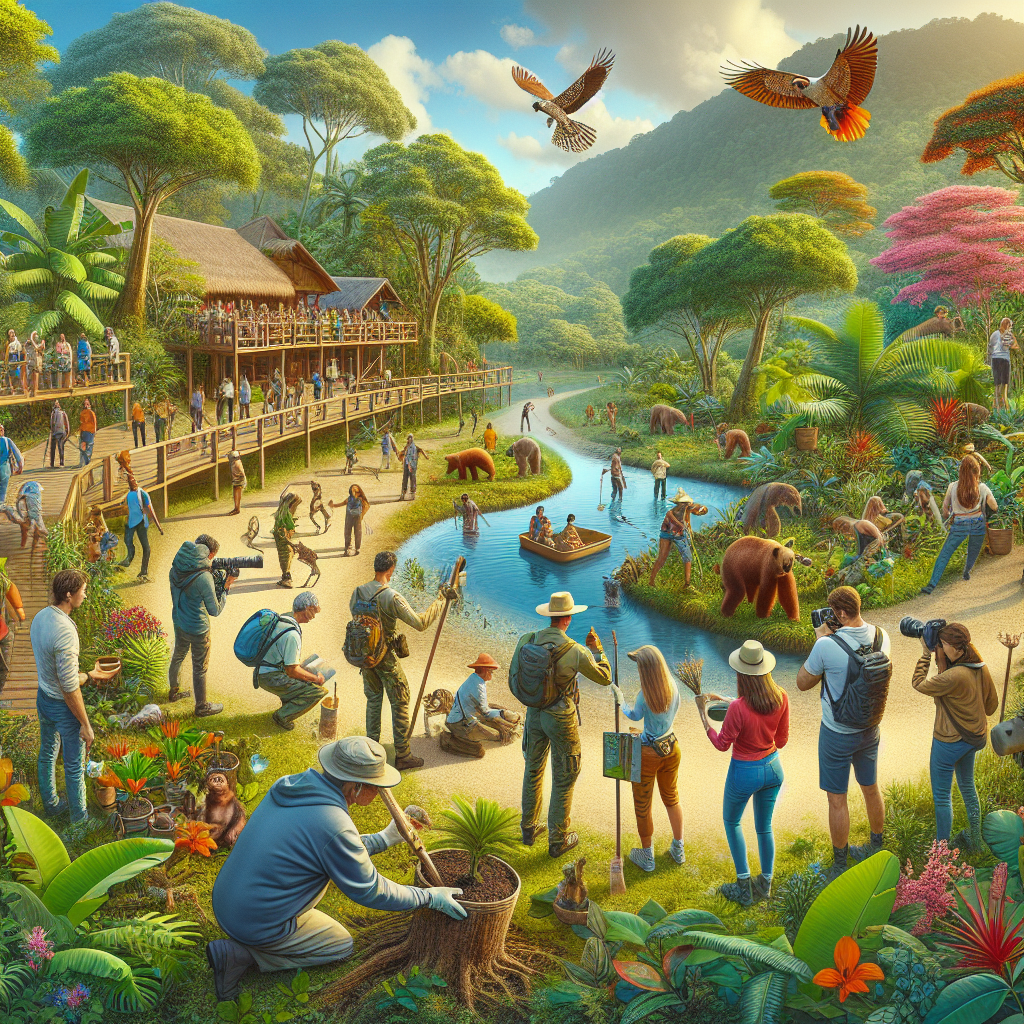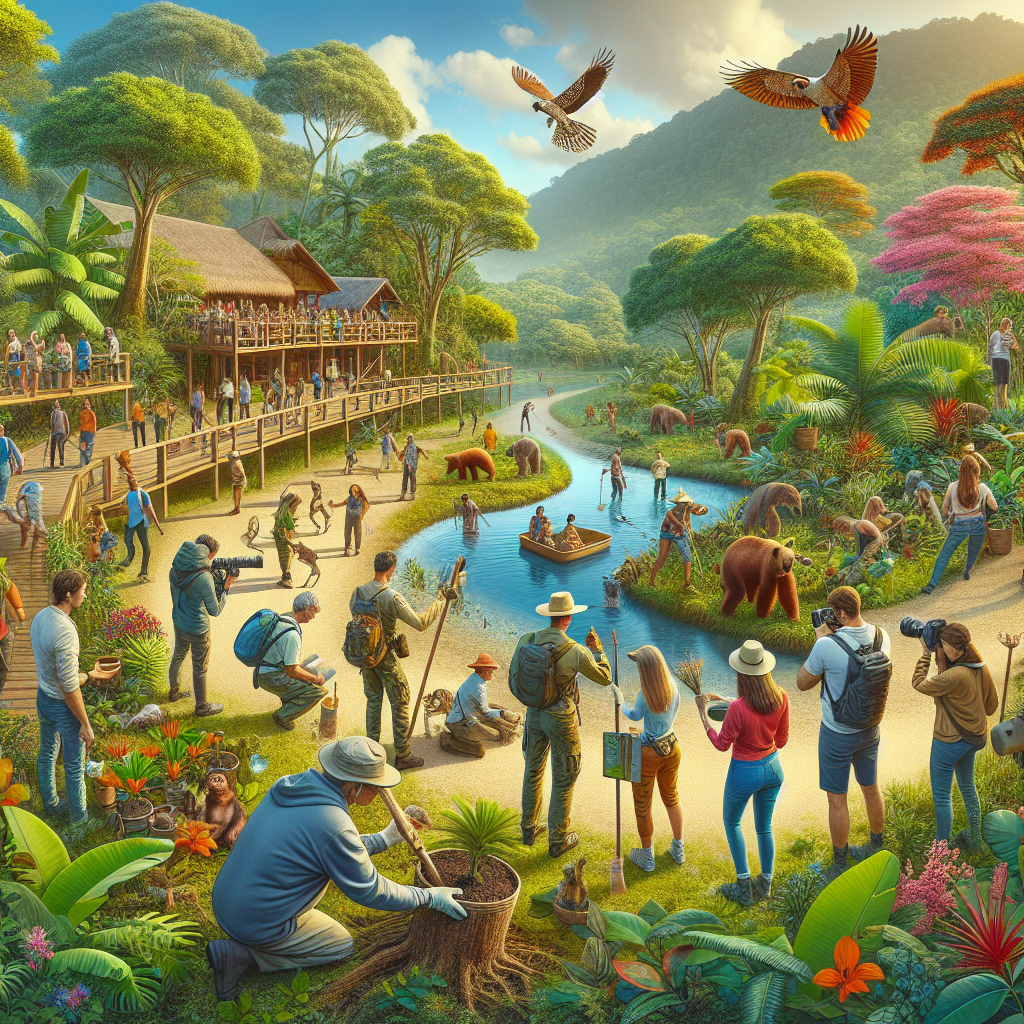Surinam, a hidden gem in South America, boasts breathtaking landscapes and a rich cultural heritage. In this article, we will explore the various ways in which tourists can contribute to the conservation efforts in Surinam. From supporting local initiatives to engaging in outdoor activities and experiencing the country’s vibrant cultural events, there are numerous opportunities for travelers to make a positive impact. Whether you’re interested in exploring the awe-inspiring national parks, immersing yourself in the local arts scene, or indulging in the delectable cuisine, Surinam has something for everyone. By actively participating in the preservation of this remarkable destination, you can leave a lasting legacy and create unforgettable memories. So pack your bags and embark on an adventure that not only allows you to experience the beauty of Surinam, but also helps in its conservation.

Overview
Surinam, also known as Suriname, is a captivating destination located on the northeastern coast of South America. This stunning country is known for its rich biodiversity, vibrant culture, and tropical landscapes. Whether you are a nature enthusiast, history buff, or art lover, Surinam offers an array of attractions and activities that will leave you in awe. In this comprehensive guide, we will explore the best ways to experience Surinam’s beauty, delve into its fascinating history, and learn about the efforts being made to conserve this remarkable place.
Location and Address
Surinam is nestled between Guyana to the west and French Guiana to the east, with Brazil to the south. The country’s capital and largest city is Paramaribo, which is situated on the banks of the Suriname River. Paramaribo is a UNESCO World Heritage site, known for its unique blend of Dutch colonial architecture and vibrant Caribbean atmosphere.
How to Get There
By Air
The most convenient way to reach Surinam is by air. The Johan Adolf Pengel International Airport, located just outside of Paramaribo, serves as the main gateway to the country. Several airlines offer flights to Surinam from major cities around the world, including Amsterdam, Miami, and Paramaribo’s neighboring countries. Upon arrival, you can easily reach the city center via taxis or hotel shuttles.
By Land
For those seeking a more adventurous route, traveling to Surinam by land is an option. Surinam is well-connected to its neighboring countries, making it accessible for travelers on road trips or those looking to explore multiple destinations. The most common land border crossings are between Surinam and Guyana, as well as French Guiana. It is important to check visa requirements and road conditions before embarking on a land journey.
Driving Directions
If you prefer to explore Surinam at your own pace, renting a car and hitting the open road can be a thrilling experience. The main road network in Surinam is well-maintained, making it relatively easy to navigate. From the airport, you can follow the East-West Link Road to reach Paramaribo. It is essential to have a detailed map or GPS navigation system, as road signs may be limited in some areas. Additionally, driving on the left side of the road may take some getting used to for those accustomed to right-hand driving.

Outdoor Activities
Surinam is a paradise for nature enthusiasts, boasting breathtaking landscapes and an abundance of outdoor activities. The Central Suriname Nature Reserve, a UNESCO World Heritage site, offers incredible opportunities for hiking, birdwatching, and wildlife spotting. Embark on a river cruise down the Suriname or Marowijne River and immerse yourself in the country’s pristine rainforests. Adventure seekers can also partake in thrilling activities such as kayaking, zip-lining, and off-road excursions.
Museums and Art Galleries
For a dose of culture and history, Surinam’s museums and art galleries provide a fascinating insight into the country’s past and present. The Surinaams Museum and the Fort Zeelandia Museum in Paramaribo offer captivating exhibitions showcasing Surinam’s colonial heritage and rich cultural diversity. The Readytex Art Gallery features contemporary Surinamese artwork, showcasing the country’s vibrant art scene.
Historical Sites
Surinam is steeped in history, with a plethora of historical sites that offer a glimpse into the country’s colonial past. The UNESCO-listed Historic Inner City of Paramaribo is a treasure trove of Dutch colonial architecture, with charming buildings lining the streets. A visit to the Saint Peter and Paul Cathedral, one of South America’s largest wooden structures, is a must for history enthusiasts. The Jodensavanne, a former Jewish settlement, provides a unique insight into Surinam’s multicultural history.
Cultural Events
Immerse yourself in Surinam’s diverse culture by attending one of its vibrant cultural events. The Suriname Jazz Festival, held annually in Paramaribo, showcases local and international jazz artists in a lively atmosphere. The Keti Koti Festival, held on July 1st, commemorates the abolition of slavery and features music, dance, and exhibitions. Additionally, Hindu festivals such as Diwali and Phagwa offer an opportunity to experience the country’s rich cultural heritage.
Outdoor Markets and Festivals
Surinam’s outdoor markets and festivals are a feast for the senses. The Central Market in Paramaribo is a bustling hub of activity, where you can find fresh produce, traditional handicrafts, and local delicacies. The Maroon Market, located in the village of Brownsweg, offers a unique shopping experience with its array of artisanal goods created by Maroon communities. Don’t miss the Suriname Heritage Festival, which celebrates the indigenous cultures of Surinam with traditional music, dance, and art.
Conservation Efforts in Surinam: How Tourists Can Contribute
Surinam is renowned for its stunning natural beauty and rich biodiversity, making conservation efforts crucial to preserving its unique ecosystems. As a responsible tourist, there are several ways you can contribute to these efforts during your visit to Surinam:
-
Support Local Conservation Organizations: Donate to or volunteer with local conservation organizations that work to protect Surinam’s natural habitats and wildlife. These organizations often offer guided tours and educational programs that promote sustainable practices.
-
Choose Eco-Friendly Accommodations: Opt for eco-lodges or sustainable resorts that prioritize environmental conservation and responsible tourism practices. These establishments often implement measures such as energy efficiency, waste reduction, and support for local communities.
-
Respect Wildlife and Natural Habitats: When exploring Surinam’s nature reserves and forests, adhere to the principles of Leave No Trace. Avoid littering, stay on designated trails, and maintain a safe distance from wildlife to minimize disturbance.
-
Support Local Communities: Engage in community-based tourism activities that allow you to interact with local communities and learn about their traditional knowledge and practices. This not only benefits the local economy but also promotes the preservation of cultural heritage.
-
Practice Sustainable Tourism: Minimize your ecological footprint by using eco-friendly transportation options, conserving water and energy, and reducing waste. Be mindful of the resources you consume during your stay in Surinam and support local initiatives that promote sustainability.
By actively participating in these conservation efforts, you can help preserve Surinam’s natural wonders for future generations to enjoy. Remember that every small contribution can make a significant difference in safeguarding the biodiversity and cultural heritage of this remarkable country.
In conclusion, Surinam offers a diverse range of experiences and attractions that cater to every type of traveler. From outdoor adventures to cultural immersions, this captivating destination promises unforgettable memories. As you explore Surinam’s beauty and learn about its vibrant culture, don’t forget to play your part in conserving this remarkable country. With your support, Surinam will continue to thrive as a haven of biodiversity and cultural richness.
